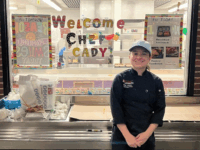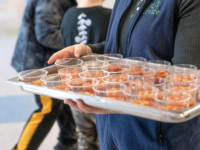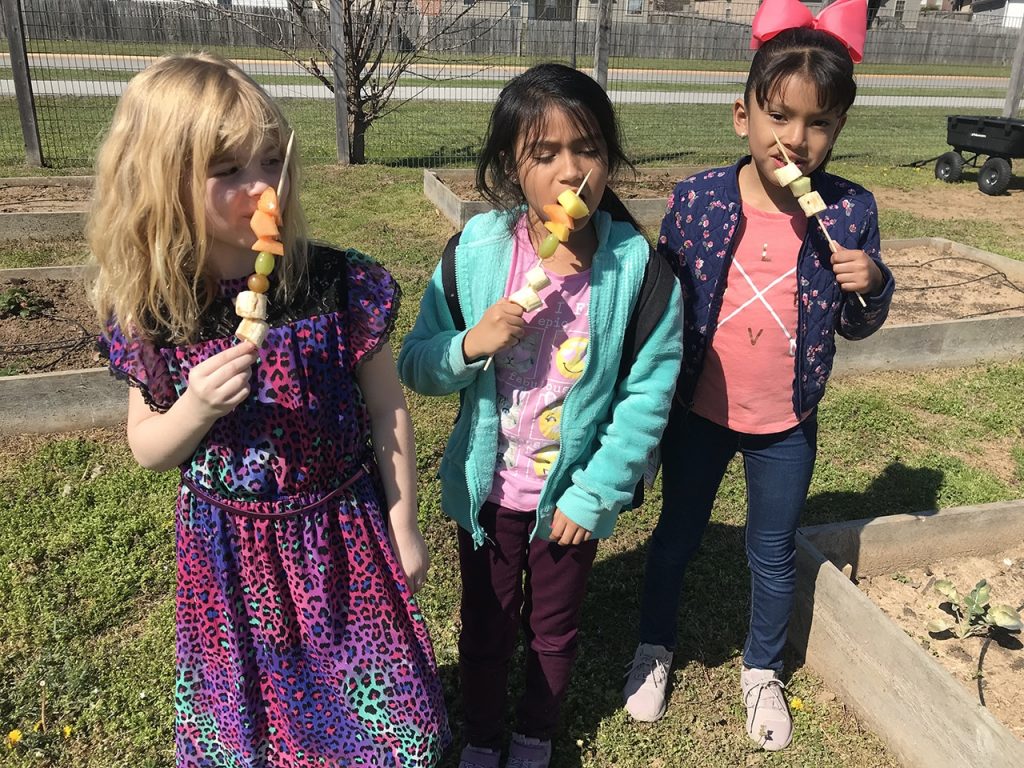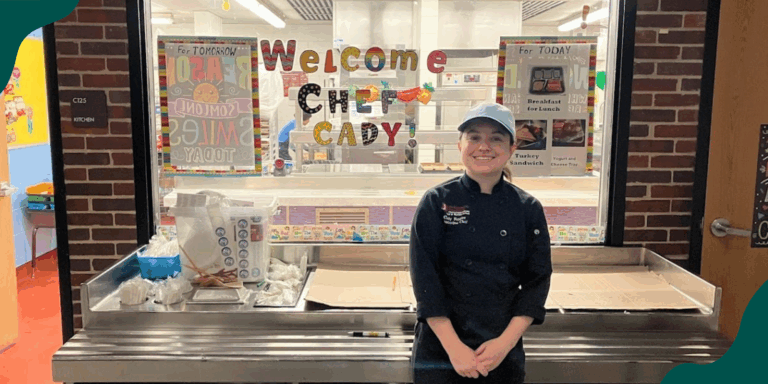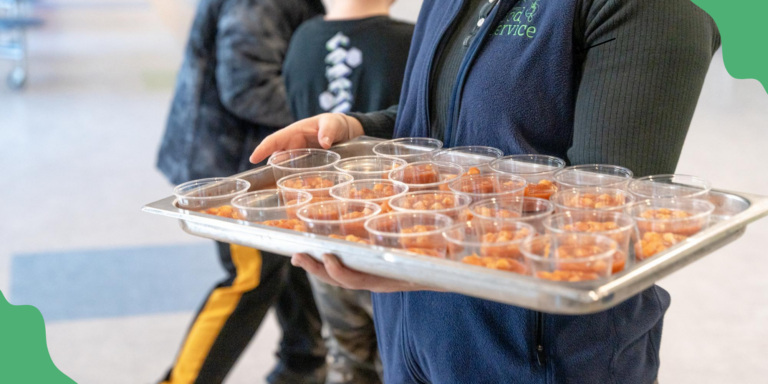On the first day of Spring Gardening and Cooking Club, students write lists of foods they would like to make or grow this season in their journals. I use these recommendations to plan the 10-week curriculum for the 80 students that come to the weekly after-school program. Since that first day, my students have been begging me to make fruit kabobs.
“Rainbow fruit kabobs!”
“C’mon it’s healthy!”
“We can even, like, count or something so we learn too!”
They plead and insist. Of course I want to say yes to students jumping up and down about fruit, but all I could think about was what the financial cost would be. Pineapple, mango, kiwi, and strawberries for 80 students? I didn’t want to blow all my grant money on the second week of garden club, and I couldn’t find a grocery store in town willing to donate that much pricey produce. I had no idea how I would be able to pull off this lesson.
Luckily, FoodCorps works with Tri Cycle Farms, a non-profit farm in nearby Fayetteville, Arkansas, to recover expired and damaged foods from the local Whole Foods. Every Monday morning for the past year, I have loaded my car with crates of recovered, high-quality foods to donate to local shelters and community partners, and to use in nutrition and cooking lessons with my students.
On Monday mornings I arrive at the back receiving doors of Whole Foods to sort through expired, damaged, or excess product that the store has decided to donate. We sort the foods according to their type: bakery, deli (packaged sandwiches & salads), eggs, dairy, produce, and salvage (any miscellaneous items such as coconut water or even dog food). We then load up our cars in a tetris style game with the crates of food and drive to Tri Cycle Farms to unload and weigh the food in. Once the food has been weighed and recorded in, we sort through the items and decide what will go to the various different community partners and shelters. I take what I think I can use in that weeks lessons and garden club activities.
The food recovery process takes about two hours and then I am able to utilize the food in the week’s lessons or to supplement gardening and cooking club. Every week is a surprise, some donations larger than others. Because you never know what you will pick up at food recovery, it really forces me to be creative and flexible with my lessons. For example, one week we got a massive donation of Hawaiian Rolls. That week I had planned to do the FoodCorps lesson “How to Build a Healthy Snack” so I substituted the whole grain cracker for Hawaiian Rolls.
Then, one Monday in April, I arrived to find crates and crates of donated ‘past date’ fruit. Containers of fresh pineapple, papaya, mango, honeydew melon, blueberries, strawberries, and bananas stretched out before me. I collected approximately $168.80 worth of delicious fruits in great condition for free. The timing of this donation was impeccable as I was able to take enough fresh fruit to make Rainbow Fruit Kabobs with all 80 students in garden club. I am so thankful for the partnership between Tri Cycle Farms, Whole Foods, and FoodCorps. The Food Recovery Program allows me to reach more students so that my tight budget does not become an obstacle to creating quality lessons.

How to Make Rainbow Fruit Kabobs
Ingredients:
-Kabob Skewers
-Diced Pineapple, Strawberry, Banana, Blackberry, Grapes
- Set prepared fruit in individual bowls in a buffet style line
- Allow Each student to go down the line and add fruit to their kabob skewer
- Encourage students to eat a ‘Rainbow’ of fruit!

